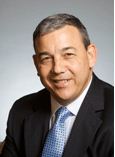Hotel Occupancy on Track to Hit 20-Year High: PwC
The hospitality industry is on track to hit its highest occupancy levels in 20 years in 2015, according to a report from PricewaterhouseCoopers L.L.P.
By Keith Loria, Contributing Editor
The hospitality industry is on track to hit its highest occupancy levels in 20 years in 2015, thanks in part to strong gains this year, according to a report from PricewaterhouseCoopers L.L.P.
Once the economy rebounded from a weather-related slowdown in the first quarter of 2014, travel activity picked up significantly in the second quarter, resulting in better-than-expected occupancy performance, the report explains.
“Hotel demand in the United States is as strong as it’s ever been,” Scott Berman, principal and PwC’s U.S. industry leader for hospitality & leisure, told Commercial Property Executive. “After a very uneven first quarter, there was a lot of uncertainty. But the summer has not only helped us catch up, but we exceeded where everyone thought we would be.”
Transient travel in both commercial and leisure segments continues to increase, and hoteliers are reporting strong growth in the group segment, which still has room to recover to peak levels.
“Leisure travel both domestically and internationally signifies the rebound of group business,” Berman said. “This was a segment of the market that the hotel industry has been chasing since the recession.”
The combination of increasing group demand and steady above-trend economic momentum will push up RevPAR a solid 7.6 percent in 2014, PwC estimates.
“Leisure, group and corporate are all behaving favorably from an operative and room rate perspective,” Berman said. “When that happens, you’re going to see very strong RevPAR performance.”
For the rest of 2014, PwC expects lodging demand to increase 4.0 percent, which, combined with still-restrained supply growth of 1.0 percent, is anticipated to boost occupancy levels to 64.1 percent.
Occupancy levels in the lower-priced chain scale segments are expected to approach or exceed prior peak levels, as price-driven compression from higher-priced hotels drives demand to lower priced hotels.
“What’s been even more surprising, from my perspective, is now we’re starting to see secondary and tertiary markets do better, and that’s where more economy and flex service hotel properties reside,” Berman said. “That is indicative of a strengthening domestic economy.”
Berman said that PwC expects accelerating supply growth of 1.6 percent in 2015, due to construction of new hotels, with supply growth in the higher-priced chain scale segments outpacing growth in the lower-priced segments.
“While we’re starting to see more hotel construction starts, it’s really still just at 1 percent or less growth of supply,” Berman said. “A supply that’s muted, combined with strong demand and a robust economy, is the formula for continuing hospitality industry growth measured in RevPAR percentage.”
Of the top 25 markets, the only one that hasn’t seen consistent growth is Washington, D.C., which Berman said is because the capital experienced a softer landing during the recession.
The updated estimates from PwC are based on a quarterly econometric analysis of the lodging sector, using an updated forecast released by Macroeconomic Advisers, L.L.C. in August and historical statistics supplied by Smith Travel Research and other data providers.








You must be logged in to post a comment.